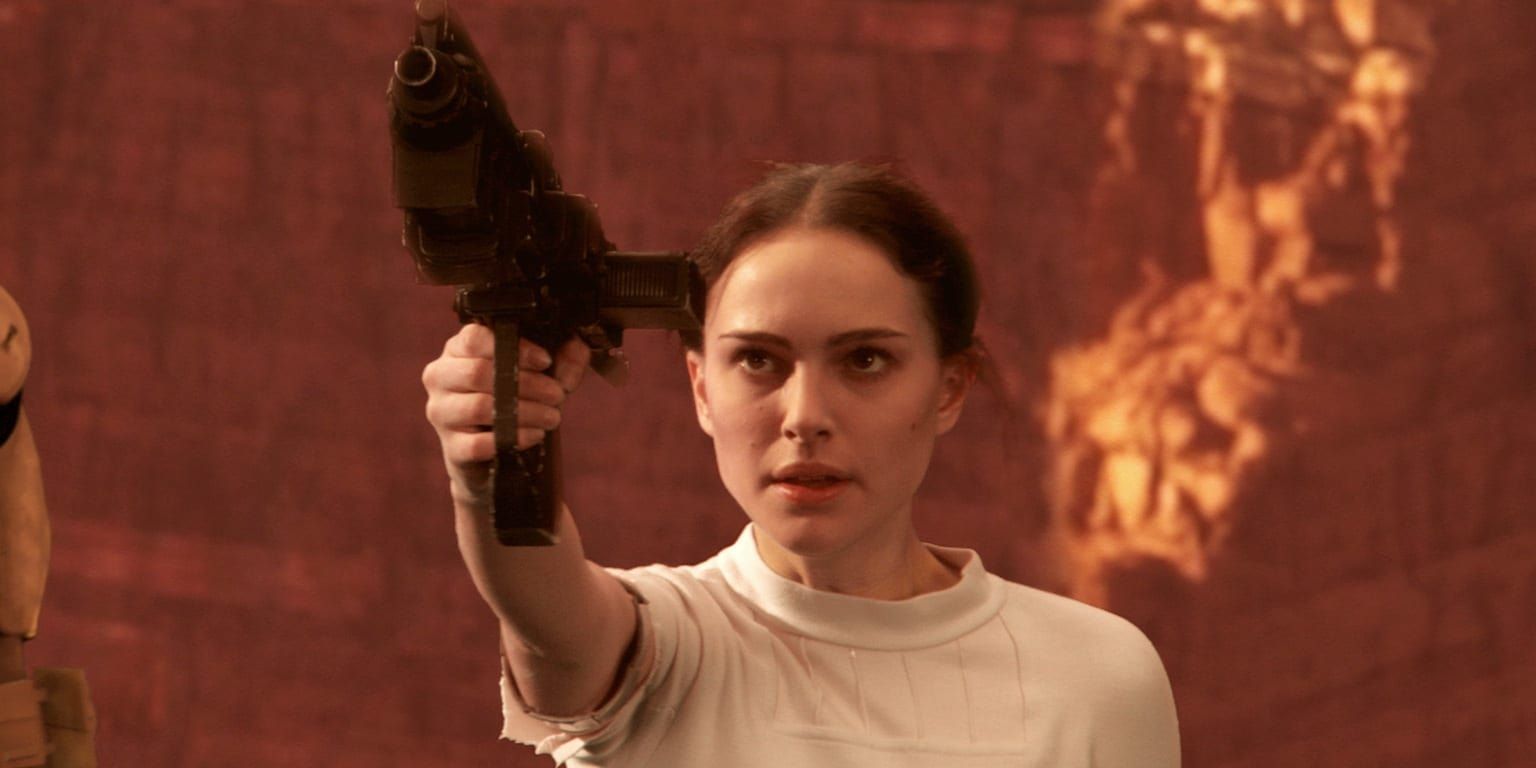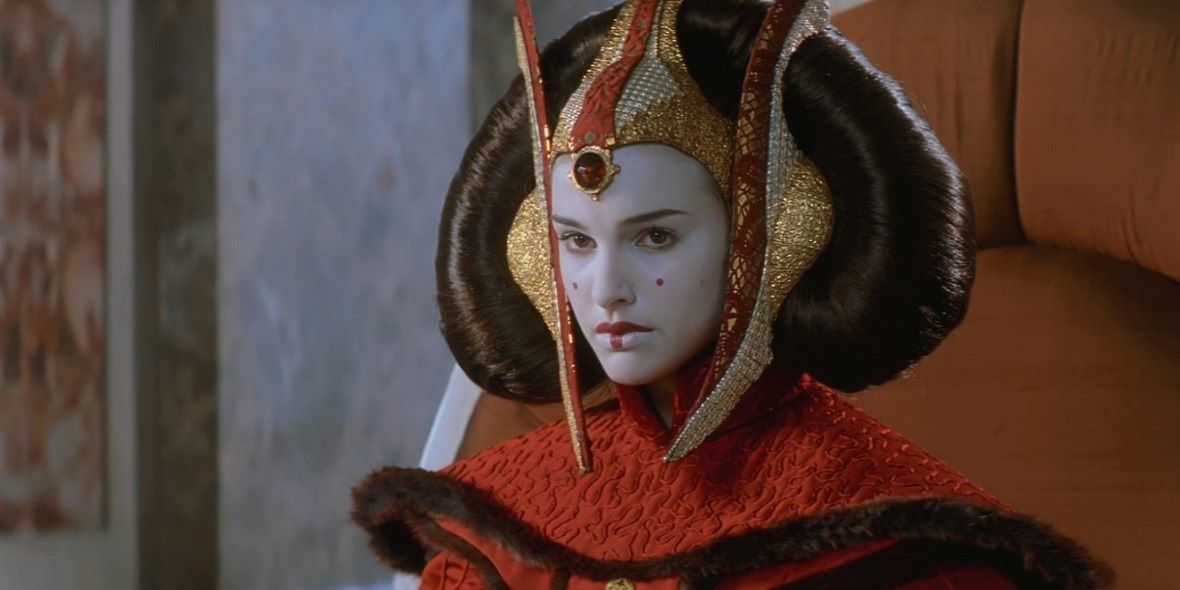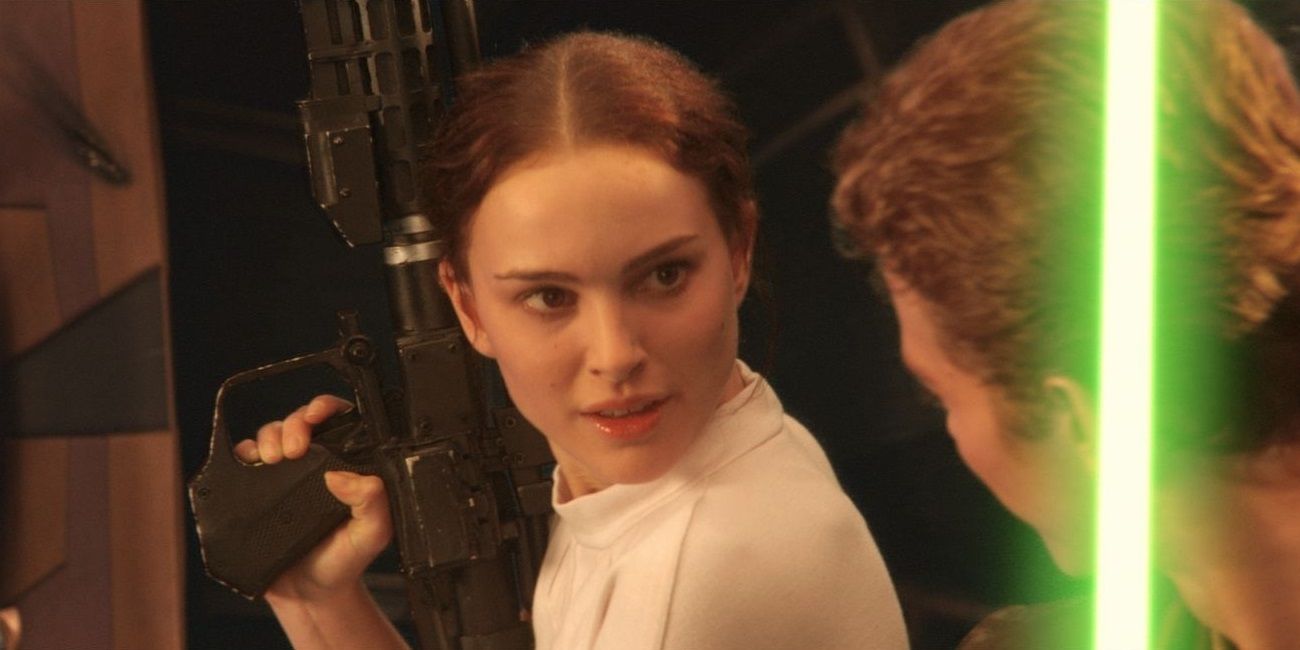After the original and prequel trilogies had focused on Luke and Anakin Skywalker, respectively, the Star Wars sequels were praised for giving a spotlight to a female hero, Rey. But there have always been strong female characters in a galaxy far, far away, from Ahsoka Tano to Mara Jade to Sabine Wren to Aayla Secura (although, admittedly, the saga has a much higher quotient of male characters). George Lucas’ initial trilogies – comprising the original six-movie Star Wars saga – both had a strong female hero in their line-up.
The female leads of Lucas’ trilogies, Leia Organa and Padmé Amidala, are often described as typical damsels in distress because it fits the narrative of Disney diversifying the Star Wars brand to keep up with modern times. But Leia and Padmé never conformed to traditions or stereotypes – and this was largely thanks to the brilliant actors behind the roles pushing for their fair share of the action.
Before Attack of the Clones began shooting, Natalie Portman asked George Lucas to include Padmé in more action scenes. She ended up being featured in the droid factory melee, a couple of shootouts, and even had a significant role in the Battle of Geonosis, the spectacular skirmish that kickstarts the Clone Wars. When Anakin, Obi-Wan, and Padmé are all chained up in a gladiatorial arena, waiting to be fed to some giant monsters, Padmé is the first one to figure out how to save herself – no Force sensitivity required.
Much like Anakin, Padmé’s action scenes in Attack of the Clones make up for the interminable love scenes. Lucas has openly admitted that he doesn’t write great romantic dialogue, but he still subjected audiences to such doozies as “I don’t like sand,” and “I killed them all. They’re dead. Every single one of them. Not just the men, but the women, and the children, too.” The couple’s heroics in the Battle of Geonosis, followed by their secret wedding ceremony set to John Williams’ sweeping love theme “Across the Stars,” just about redeem the shakier parts of their romantic arc. The prequel trilogy focuses largely on Anakin’s protectiveness of Padmé, but this is contrasted interestingly with Padmé’s independence; Anakin wants to be her protector, but she can already protect herself.
Before Portman asked to be included in more action scenes, Padmé had already been involved in the lion’s share of the action in The Phantom Menace. She was introduced as the Queen of Naboo, who employed a series of decoys as stand-ins and disguised herself as a handmaiden to protect her identity so she could go to riskier corners of the universe like Mos Espa. In the final battle, Padmé and a bunch of her top guards liberate their own palace from the Trade Federation and its droid army. The Phantom Menace established that Padmé isn’t the kind of monarch who sends their troops out to fight wars for them from the comfort of a fortified bunker; she’s the kind of monarch who goes down to the frontlines and fights alongside those troops. If Portman hadn’t stepped in to get herself included in more action sequences, then this fierce part of Padmé’s character might’ve vanished after Episode I.
Portman’s contributions to her character mirror Carrie Fisher’s own contributions to Leia’s characterization in the original trilogy. In addition to polishing up Lucas’ stiff dialogue between takes, Fisher pushed for Leia to be more than just a damsel in distress. The second act of Star Wars revolves around Luke, Han, and Chewie rescuing Leia from the Death Star’s detention center – but since they don’t have an exit strategy, within seconds, she’s the one saving them. Leia sits out the Battle of Yavin in the original movie, but she’s involved in all the big action sequences in Episodes V and IV, from shooting Stormtroopers on Cloud City to strangling Jabba with the chains he put her in to saving Han’s life during the Battle of Endor.
Unfortunately, after partaking in the major battles in Episodes I and II, Padmé was heavily sidelined in Episode III. She isn’t involved in a single action scene and she spends all her screen time patiently listening to Anakin talk about his angst, despite being heavily pregnant and undoubtedly going through a lot herself. The plot of Revenge of the Sith revolved around Anakin’s fear that he won’t be able to protect Padmé from death, so Padmé’s role in the story was mostly abstract. She tells Anakin about her pregnancy when he returns to Coruscant, then hangs around her apartment for the rest of the movie, briefly appears in the Senate to poetically summarize the birth of the Empire, then goes into labor and dies of sadness. Luke and Leia’s mother deserved a much more ceremonious end to her arc.
But if Portman hadn’t fought for Padmé to be included in Attack of the Clones’ action set pieces, then her arc might’ve been a lot more disappointing. Politicians are less interesting when they aren’t carrying blasters or fighting with beasts 10 times their size. Most of Padmé’s most memorable moments from the movies, like using goofy gadgets to infiltrate her own palace and singlehandedly defeating a nexu while shackled to a massive column, are action-based.



